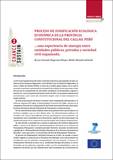|
Globalisation and deepening democratisation, together with rising incomes, especially of the middle-income group of countries, has activated demands for fiscal decentralisation across the world (Tanzi 2000). In India, a major improvement in the potential for fiscal federalism resulted from the 73rd and 74th Constitutional Amendments (CAA) in 1992. These consist of: a) provision to constitute State Finance Commissions (SFC) under Article 243-I, and b) Amendment of Article 280 of the Indian Constitution by inserting Section 3C that requires the Central Finance Commission to suggest measures augmenting the consolidated fund of the States to supplement resources devolved to municipalities on the basis of respective SFC recommendations (Mohanty et al. 2007).
Transparent and participatory budgeting processes are important in promoting efficient and good governance (Bhanu 2007). In India, the process of budget preparation lacks transparency and participation. Prior to the Constitutional Amendment Act in 1992, there were both two- and three tier systems in various states in India, which led the government to legislate for more fiscal decentralisation. Internationally, Bird and Slack (2007) and Slack and Chattopadhya (2009) identify four types of municipal governance models. These include One Tier, Two Tiers, the voluntary Co-operation Model and the Special-Purpose District Model (Alm 2010: 23).
Following this international model, state governments in India are now proposing a model on a level above local municipal corporation level; the Metropolitan Planning Committee, which consists of many local authorities in an agglomeration. Also there are Special Area Authorities within a metropolitan area, making the governance model a multi-institutional type.
|
Recent Chance2Sustain Publications |
|
|
|
|
|

